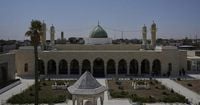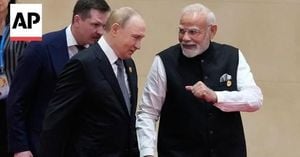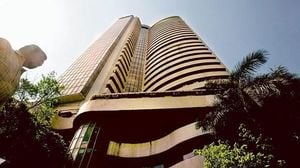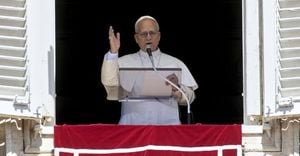On September 1, 2025, a wave of hope swept through Mosul’s Old City as the historic al-Nuri Grand Mosque and its iconic leaning minaret reopened their doors, eight years after their destruction by Islamic State militants. The event, presided over by Iraq’s Prime Minister Mohammed Shia al-Sudani and attended by senior international dignitaries, marked not just the restoration of a cherished landmark but also a powerful affirmation of resilience, unity, and cultural pride for a city—and a nation—scarred by war.
The reopening ceremony was the culmination of a six-year reconstruction effort led by UNESCO, in partnership with Iraqi heritage authorities, Sunni religious leaders, and generous international donors including the United Arab Emirates and the European Union. According to UNESCO, the project—aptly named "Revive the Spirit of Mosul"—was more than a physical rebuild; it was a testament to the city’s determination to preserve its shared history and identity. As Xing Qu, UNESCO’s deputy director general, told The National, "When I see Al Hadba minaret standing tall once more, reconstructed with stones carefully recovered from its collapse, and the churches of Al Saa’a and Al Tahera revived, restored with the participation of both Muslim and Christian communities, what appears is not just heritage restored, but proof of the resilience of a people determined to preserve their shared history."
Al-Nuri Mosque, with its famous leaning minaret—affectionately nicknamed the "hunchback"—has been a symbol of Mosul for roughly 850 years. The minaret, dating back to the 12th century and once featured on Iraq’s 10,000 dinar note, stood as a silent witness to centuries of change. But Mosul’s fate took a tragic turn in 2014, when IS leader Abu Bakr al-Baghdadi declared the so-called "caliphate" from the mosque’s pulpit, making it a flashpoint in the struggle for Iraq’s soul. As IS militants retreated in 2017, they detonated explosives inside the mosque and minaret, reducing them to rubble in an act of symbolic destruction.
The loss of the mosque was a devastating blow—not only to Mosul’s skyline but also to its spirit. Yet, as Prime Minister al-Sudani declared at the reopening, "The reconstruction of the mosque will remain a milestone, reminding all enemies of the heroism of Iraqis, their defense of their land, and their rebuilding of everything destroyed by those who want to obscure the truth." He continued, "We will continue our support for culture, and efforts to highlight Iraqi antiquities, as a social necessity, a gateway to our country for the world, an opportunity for sustainable development, and a space for youth to innovate." (Associated Press)
The restoration project was ambitious, intricate, and deeply collaborative. UNESCO and Iraqi experts used traditional materials and techniques, often salvaging stones from the original rubble to ensure authenticity. The United Arab Emirates played a pivotal role, contributing $50 million, while the European Union and other donors helped push the total funds raised to more than $115 million. This investment not only rebuilt the mosque and minaret but also restored two historic churches—Al Tahera and Al Saa’a—reflecting Mosul’s once-vibrant tapestry of Christian and Muslim communities.
The project’s impact rippled far beyond bricks and mortar. According to UNESCO, it created 7,700 local jobs and trained 2,800 young Iraqis in traditional crafts and technical skills, empowering a new generation to carry forward the city’s heritage. "Through community dialogues, the thousands of jobs created and the training given to thousands more, we can simply summarise this major initiative: it was a project of Mosul, for the people of Mosul, by the people of Mosul," Xing Qu emphasized.
For Mosul’s Christian population, the restoration of war-damaged churches has been especially poignant. Once numbering around 50,000 in 2003, fewer than 20 Christian families now remain as permanent residents in the city, though many who fled to the Kurdish north still return for church services. The rebuilding of these sites is a gesture of hope for the city’s shrinking Christian community and a commitment to preserving the diverse heritage that has defined Mosul and the broader Nineveh plains for centuries.
The reopening of the al-Nuri Mosque and its minaret has resonated far beyond Iraq. UNESCO’s Xing Qu called the event "a lesson for the world," highlighting how heritage-led recovery can foster peace and reconciliation in societies torn by conflict. He stressed that "valuable lessons for heritage-led recovery can certainly be replicated" in other war-torn areas, including neighboring Syria, which is only just emerging from nearly 14 years of civil war. As Iraq’s second-largest city and the largest to fall to IS during the group’s brutal reign, Mosul’s journey from devastation to renewal is being hailed as a model for post-conflict reconstruction in the region.
During the ceremony, international partners and Iraqi officials alike reflected on the symbolic power of the moment. Xing Qu described it as "an occasion to acknowledge the generosity of our international partners—including the United Arab Emirates, the European Union, and other donors—whose support made this achievement possible." He continued, "Together, these efforts have not only restored monuments of historical and spiritual importance, but also rebuilt trust, pride and hope in Mosul."
The reopening is not the end of UNESCO’s work in Iraq. As Xing Qu noted, it "marks a new beginning." The organization plans to continue supporting Iraq in safeguarding its cultural heritage, whether through further restoration projects in Mosul, protecting archaeological sites, or supporting museums and archives. Iraqi experts, now equipped with invaluable experience, are poised to share the lessons learned in Mosul with other countries facing the daunting task of rebuilding after conflict.
At the heart of the celebration was a sense of unity and remembrance. "It will be a day of pride, remembrance and unity, and a powerful affirmation that culture and heritage, when nurtured collectively, can be drivers of peace and reconciliation," Xing Qu said. The presence of both Muslim and Christian communities at the inauguration underscored the project’s message: that Mosul, and Iraq as a whole, embraces its diversity and stands resilient against forces that seek to divide.
As the sun set over Mosul’s Old City on September 1, the al-Nuri Grand Mosque’s minaret once again cast its shadow over the city—a symbol not of defeat, but of rebirth. The stones, old and new, now echo with the promise of a future shaped by unity, cultural pride, and the unwavering spirit of a people determined to reclaim their history from the ashes of war.





